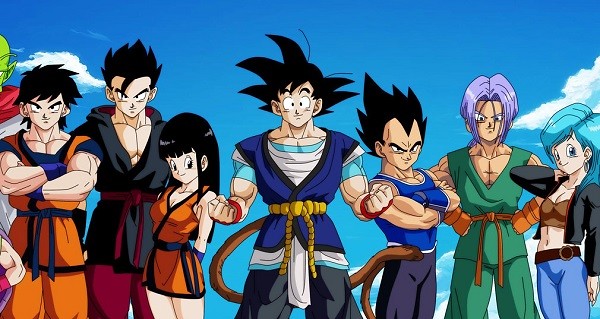Anime: a rising problem
True anime is considered to be a form of Japanese film and television strictly consisting of animations, typically aimed at adults as well as children. Although anime is considered sacred by many who love it, there are many cultural, racial, and sexual flaws in this style of television. However, not all anime is bad, and it is only a small portion of the works available that displays a culture of numerous questionable ethics decisions.
The greatest pitfall of anime is its acceptance and normalization of sexual violence. Certain forms, especially those catered towards adults, can commonly depict sexual violence, typically against women. For example, it is not uncommon to witness rape, sexual assault, and unrealistic and sexist depictions of women. It has gotten so bad that the United Nations proposed banning Japanese entertainment that had sexual violence in it in 2016, according to Forbes. However, political groups in Japan continue to defend this unethical practice in anime. According to Forbes, the Japanese Women’s Institute of Contemporary Media Culture has defended the practice, citing unethical censorship that could result from the regulation of the platform. Although, this groups protection brings concern, because many producers have made a business of entertainment allowing sexual practice. The dark side of this is that it is profitable because people continually watch this form of anime.
Apart from strictly sexual violence aperant in certain animes, the “hyper-sexualization” of women can be problomatic to how viewers later view women in the real world. Many anime films and television shows tend to depict women as people with glorified sexual features that forgoes accurate depictions of women for a stritly sex-driven character, according to Nique.net. Some of the most popular animes such as, “Keijo!!!,” “Prison School,” and “Puella Magi Madoka Magica” provide hyper-sexualized plots that dramatize female characters sexuality. This practice is often known as “fanservice” because it appeals to the predominantly male audiences, according to PJ Media. Apart of sexual aspects, women’s personalities are also falsely depicted. Instead of creating characters that display realistic qualities and personalities, a generic female character that has little personality is often chosen. An important result that must be considered is that how both male and female audiences are taught to accept false stereotypes. These depictions can create unrealistic expectations for males who buy into these depictions, as well as teach female audiences that this is an “ideal” woman and they should change themselves to fit that view. Overall, anime falls short of providing respectful and accurate depiction of women.
The apparent addictiveness of anime also presents a serious concern. According to PJ Media, a small group of “superfans or otakus” have let anime take over their whole life and are now consumed and surrounded by the medium. These superfans buy such an abundance of anime and other anime-related items that producers try to cater to their interests, according to PJ Media. The likes and style of these superfans often falls into the version of anime that promotes previously stated problems present in many shows.
Apart from their inadvertent creation of more unethical anime, their addictive relationship with the platform shows how dangerous the style of entertainment can be. Watchers can become so intertwined in the virtual world they cherish, that they lose sight of their current reality and try to further associate themselves with the distant anime world. Often times, this can lead to greater issues with living in their current world and their desire for the alternate reality grows stronger.
Even though the portion of anime that is problematic is small, it is impactful enough to produce concerns about the medium. So much so that a growing hate towards anime has been observed as people feel threatened by certain extreme plots. Although the small portion of anime creates a bad name for the medium as a whole, it does illustrate serious flaws present in anime’s culture.

Matthew is a senior this year and excited for his final year on staff. One of Matt’s talents is his self proclaimed music taste as can be seen from his...
A misjudged art form
While its true origins are hard to place, anime is often defined as any animated work, usually a film or television show originating from Japan. While the term ‘anime’ is almost universally understood across America, Japan, and numerous other parts of the world, the name has amassed a negative stigma. Despite being adored by millions of people, the common opinion on the art form is still present: due to being seen as cartoons that would appeal to children, the strange nature of anime, and its intense fanbase, anime does not garner the same level of respect as other movies or TV shows. However, critics of anime often simply follow whatever the popular opinion is rather than formulating their own beliefs by simply watching the art form.
One reason for this stigma could be because of the cartoonish nature of the medium. People tend to think that because it is animated, the majority of it is clearly meant for children. In reality, the opposite is true. In America, cartoons or animated works are usually meant to appeal to children. On the other hand, while many anime works are indeed geared toward children, like “Pokemon” or “Dragon Ball,” a large number of anime have a more mature intended audience, like “Berserk” or “Kill la Kill.” With such a wide variety of intended audiences, the medium is not made for one specific group. This is a large reason why Americans have such convoluted ideas on what anime actually is. Anime also encompassses a much wider plethora of topics, themes, ideas, and age groups. According to anime Art Museum, the subject matter of anime can range from the incredibly cute and simple to gratuitous or even realistic violence.
There’s no secret as to why many people tend to avoid anime because of the bizarre nature of the medium, specifically the art style. American TV shows and movies tend to play it on the safe side when writing or producing, often to appease audiences or make sure people don’t feel like they’re taking a risk watching something. Anime, on the other hand, is much more willing to give open-minded people the opportunity to explore an art form less restricted by conventional measures. According to anime Art Museum, because the subject matter varies so much, its range is unlimited. Sure, the style of anime, featuring anything from over-the-top facial expressions to disproportionate eye sizes, may ward off some potential viewers. However, the different look and feel is just part of the stylization that anime offers. Societal differences can also account for this. Certain styles might be considered normal in one culture after being exposed to it more than other cultures So, while the style of anime may come off as unconventional to people who are not usually exposed to it, describing anime as “different” would be a better adjective than “weird.”
In reality, the strangeness of anime is something that should be celebrated by people who consume media. Contrary to regular American television consumers, anime consumers are willing to take risks in what they watch. anime fans rarely expect to see the same run-of-the-mill show or movie that a viewer accustomed to American TV can expect. With that, anime gives the audience an opportunity to think about what they saw and ponder over what it could mean, as even a veteran anime fan would find something completely alien to them or something they had never really thought about before. It is true that American TV can have the same effect, but because of the “play it safe” nature, it is much more common to find something completely unique or original in anime.
When examining anime, people tend to look past the medium and instead look at the consumers of the medium. The term “weeaboo” or “weeb” is defined by Dictionary.com as a slang word to describe or insult a person extremely obsessed with anime or Japanese culture as a whole. Unfortunately, people tend to tie this term to everyone who watches anime, no matter how much of a casual fan they might be. According to ResearchGate, people tend to stereotype anime fans as people who are socially awkward, obsessed with video games, unathletic, and watch anime to escape reality, among other things. In reality, while this may apply to some anime fans, not everyone who enjoys anime fits this stereotype. For example, cultural icons like Keanu Reaves, Michael B Jordan, and Kanye West all appreciate the medium. Unfortunately, many people simply accept the stereotype and avoid anime altogether, both enforcing the stereotype and cutting off large numbers of people who could potentially fall in love with the medium.
Anime is sadly chained to this stigma, and in addition to many people being unfairly stereotyped, the stigma also prevents people from discovering a passion they might grow a lot from. Whether it’s the fast-paced action steeped in religious imagery of “Neon Genesis Evangelion,” or the metaphorical horror of “The Promised Neverland,” anime truly has something for everyone. It would be best to get rid of the stigma, and allow current fans to once again be accepted by the rest of society.

Art “Baguette” Boettge is a senior and returning for his third year on staff as a multimedia coordinator. When not in school, Boettge can often be...
